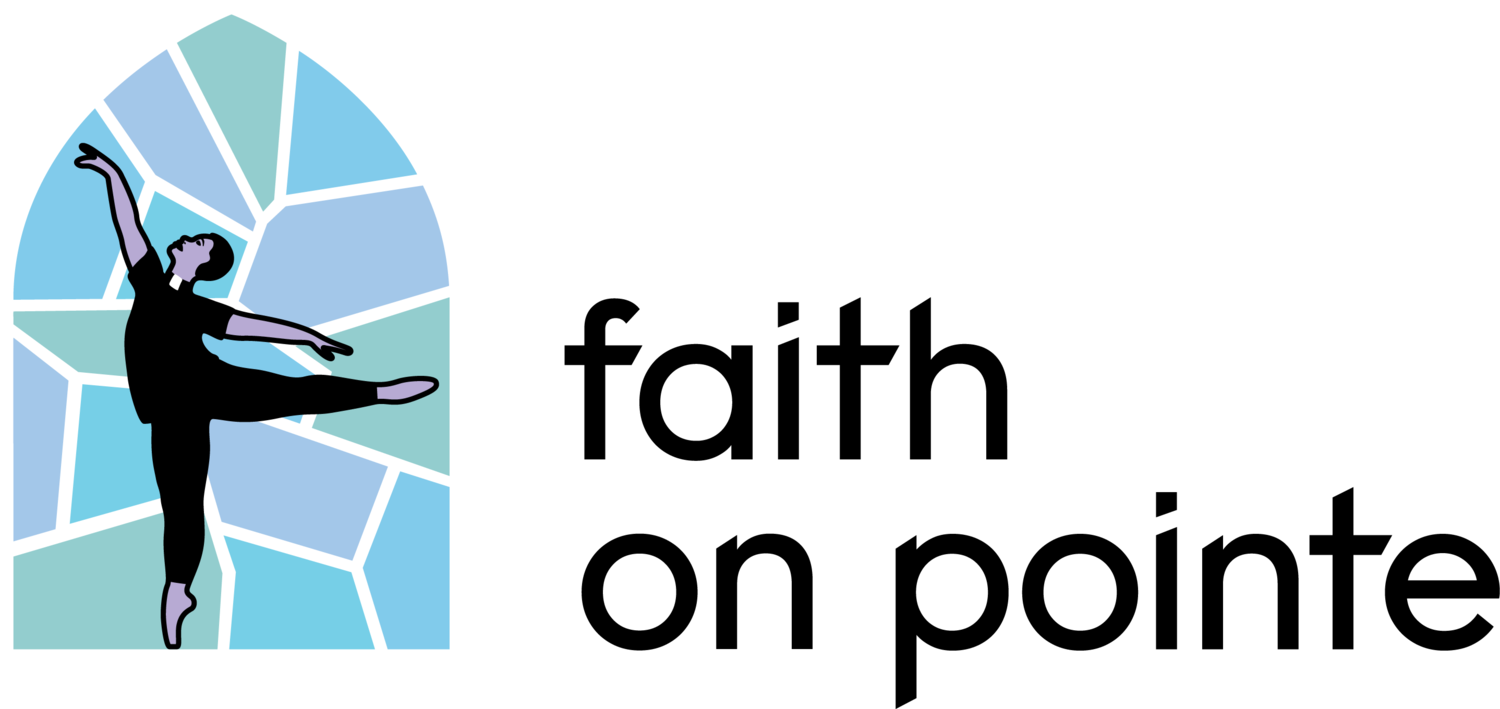Raising the Barre: Faith Lessons from the Ballet Studio
This article was published in Fidelia Magazine. Read the original article here.
“Alright everyone, let’s face the mirror and stand in first position, arms en bas. Give me a demi port de bras, then pause with the arms in second position.”
The adults – mostly women in their 20s and 30s – organize themselves into some semblance of a line as they follow my directions and arrange their body positions accordingly. If you have never taken a ballet class before, watching dancers respond to ballet lingo like this might seem pretty impressive. How do they know what that all means and what to do? you may wonder. I’ve heard from many of my students that signing up for a ballet class took courage because of how intimidating they thought it would be.
And indeed, ballet isn’t easy. Beyond the “lingo” that one must learn (and it quite literally is like learning another language, since all the ballet terminology is in French), the physical movement is a challenge. The turnout, posture, strength, and grace that ballet requires are all very foreign to the range of normal human movement. In teaching how to do an arabesque, for example, I find myself giving several simultaneous and sometimes contradictory instructions: Shoulders down. Shoulders back. Extend the arm. Don’t reach with the arm. Lift the chest. Straighten the leg. Point the foot. Lift the chin. Don’t stick the chin out. Indeed, ballet might be beautiful, but it isn’t easy.
“Bend from the waist, reach those arms down, scoop up a big pile of leaves, straighten up, and dump them over your head!”
Sure, I could say, “Cambré forward, port de bras the arms, and bring them into high fifth…” But the joy of teaching adult ballet is having the freedom to make this somewhat elitist art form both fun and possible for anyone who enters the studio. As a priest, I feel very drawn to the ministry of hospitality and welcome. For me, this is because of who Jesus was and is: the One who calls us his own and welcomes us just as we are, with no barriers or exceptions. I’ve come to recognize this as the guiding impulse for my love of teaching adult beginner ballet, too: it allows me to share something I deeply love, that makes me feel alive, with many others who desire to connect to it but don’t know how. Teaching ballet allows me to give the joy of dance to all people, making this beautiful art form accessible to all, regardless of age, gender, body type, height, or previous dance experience.
“Développé, ‘developing’ the leg into an extended position, is beautiful because of the whole movement, not because of where your leg ends up. This is about the journey, not the destination.”
Teaching ballet has been a wonderfully fulfilling “side gig.” But what has been so fulfilling about it are the ways it has taught me about how I embody my faith, and how our dancing bodies are marvelous instruments that can teach us about faith in a unique way. I struggled for a year to figure out exactly how to explain an arabesque to my students. The challenging thing about teaching arabesque was getting students to move the energy inward – to not reach from the arms or legs, but to start the movement from the center of the body. Arms out, shoulders down, leg up, reach from the chest, extend from the hip – I tried to find exactly the right muscle groups and body parts to call attention to so the students could do it correctly. One day, when none of those instructions was working, I told them to do what I was feeling in my own body: open and lift from the heart. Suddenly, I watched the entire class hold the position in exactly the right way. It reminded me of the Sursum Corda: “Lift up your hearts/ We lift them to the Lord.” Moving inward, from the physical to the metaphorical, from the skeletal ribcage to the soft, muscular, blood-pumping heart, was a deeper level of instruction not only for their dancing, but for my own awareness of what a life of faith involves. It’s not about specific, hard and fast rules; it’s about movement rooted in a heart lifted toward God.
“Left leg back, right arm out to the side, left arm up… and in a gesture of gratitude for the beauty of ballet, for this time together, and for the opportunity to dance, take your bow.”
Ballet class always ends with a reverence, or a bow/curtsy. It is a gesture of respect, gratitude, and honor for the art form, the teacher, and each other. Just as many Christians culminate their worship with the Eucharist (Greek for “thanksgiving”), ballet dancers also culminate their time together with a gesture of gratitude. I cannot help but smile at the reverence that both my ballet background and my Christian faith ask of me, in the end: an acknowledgement that by merely participating in it, I belong to something larger than myself, that extends into generations past. A reverence for transcendent beauty that connects me to the divine through something so incarnational. And the knowledge that whenever I face the mirror, I am looking at a person not only deeply flawed, but deeply loved, dancing through life with joy in my step and gratitude in my heart.
See Julie’s other articles published in Fidelia.
